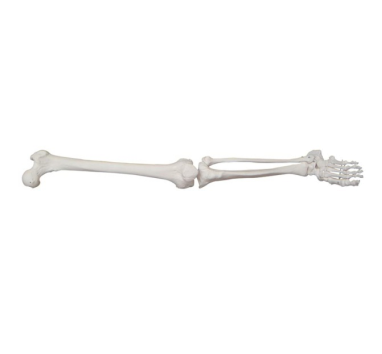29-06-2024
ADA MED SUPPLY LIMITED
Article tag: Foot joint model lower limb joint model
The major joints included in the foot joint model are critical to understanding the structure and function of the foot. Here is a detailed explanation of the main joints in the foot joint model:

Taloclower (ankle) joint:
The ankle joint is an important joint that connects the lower leg to the foot and is one of the largest joints in the foot. It consists of the tibia, the lower end of the fibula, and the talus, and is responsible for the dorsiflexion (bending the toe upward) and plantar flexion (bending the toe downward) movements of the foot. The ankle joint plays an important role in supporting and stabilizing the body in the activities such as going up and down stairs, jumping, climbing and so on.
Under normal circumstances, the ankle joint can reach about 20 degrees dorsiflexion, while the plantar flexion can reach about 45 degrees, thus providing a wide range of motion.
Intertarsal joints:
The intertarsal joint includes several small joints, such as talocalcaneal joint, talocalcaneonavicular joint, calcaneocuboid joint, etc. These joints allow the foot to perform both pronation (the bottom of the foot facing inward) and valgus (the bottom of the foot facing outward) movements to adapt to different terrain and gaits.
Flexibility and stability of the intertarsal joints are essential for everyday activities such as walking and running.
Joint tarsometatarsus:
The tarsometatarsal joint (also known as the Lisfranc joint) connects the tarsal bones (such as the cuneiform and cuboid bones) to the metatarsal bones. These joints allow for a small amount of sliding and flexing activity in the foot, helping to adapt to uneven surfaces.
Metatarsophalangeal joint:
The metatarsophalangeal joint is located between the metatarsal and phalangeal bones and is responsible for bending and extending the toes. These joints are important for grasping objects, maintaining balance, and adapting to different gaits and postures.
Interdigital joints:
The interphalangeal joint is located between the adjacent toe bones and allows for more subtle movements of the toes. These joints play an important role in grasping, balance, and certain special movements, such as ballet.
In summary, the main joints included in the foot joint model are talocalcrus (ankle) joints, intertarsal joints, tarsometatarsus joints, metatarsophalangeal joints and interphalangeal joints. These joints work together to enable the foot to perform complex movements and functions, adapting to different environments and needs. Understanding the structure and function of these joints is of great significance for medical education, sports training and daily health care.